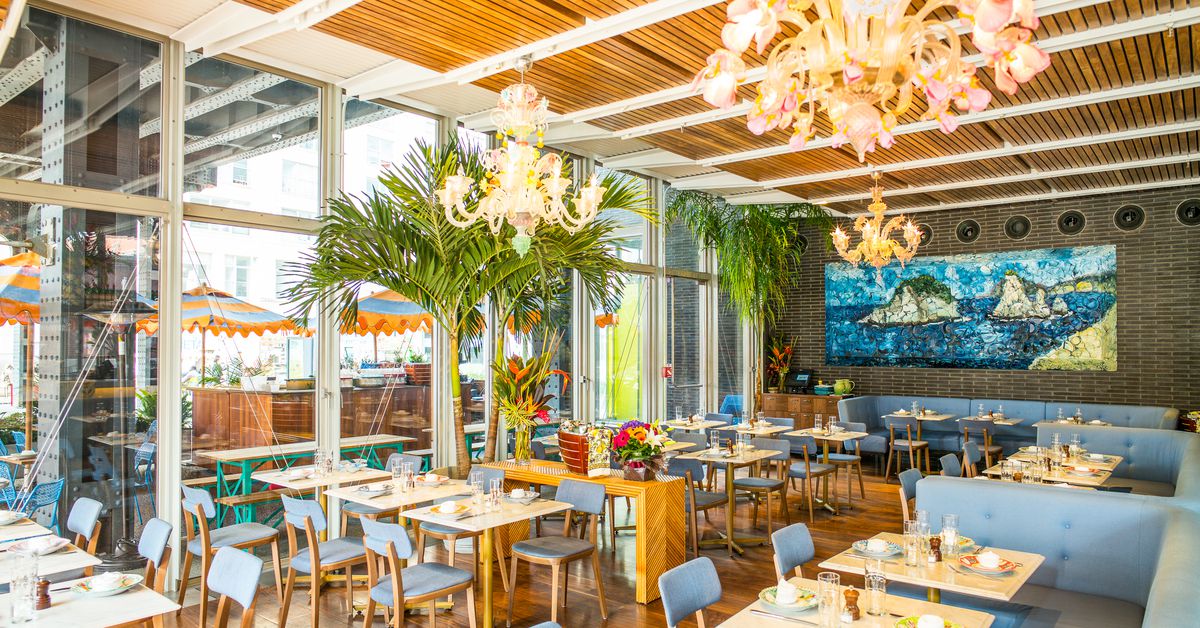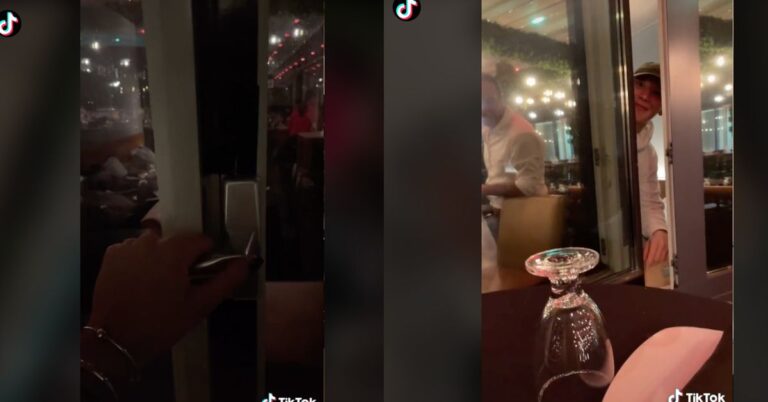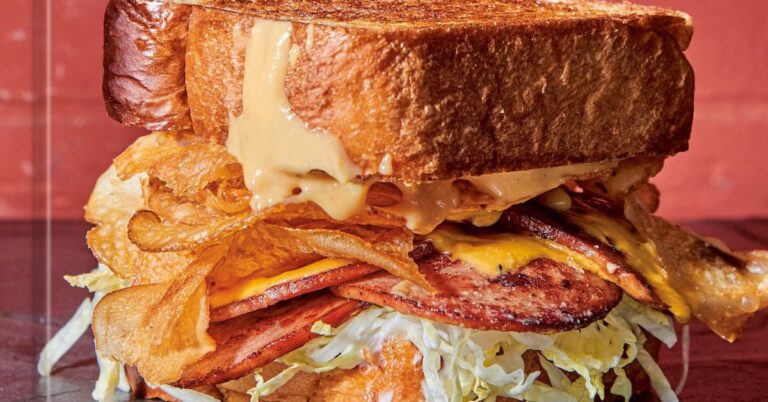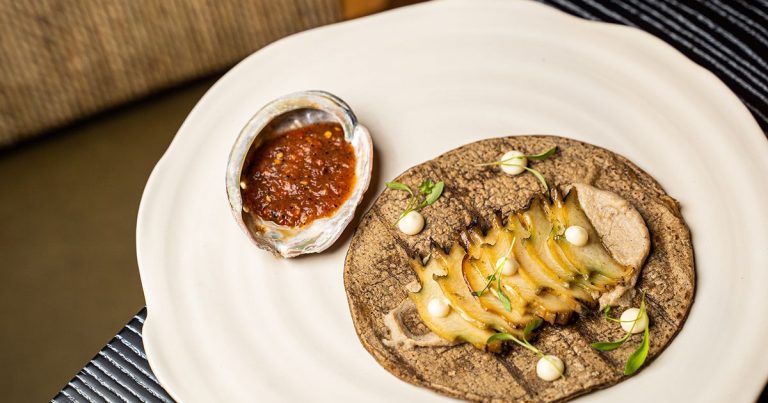Miami’s Tallest Building Will Be a Residential Tower from Major Food Group
As ever, Major Food Group is expanding. Earlier this week, a press release went out announcing that the team behind hit restaurants like Carbone and the Grill will be partnering with JDS Development Group “to conceive, build, and operate MAJOR. : a new residential-hospitality tower” that will rise 1,049 feet to become the tallest building in Miami. MFG is best known for its theatrical, expensive odes to classic American restaurant tropes. (When Carbone opened on Thompson Street, it rocked the city with its vision of Little Italy’s midcentury heyday, a living movie set in which servers in Zac Posen-designed velvet jackets brought plates of $32 spicy rigatoni vodka and $55 veal parm to some of the hardest-to-get tables in New York.)
Even now, with restaurants in Miami, Vegas, Hong Kong, and Tel Aviv, this project represents uncharted territory for founders Mario Carbone, Rich Torrisi, and Jeff Zalaznick. The press release is a bit short on details when it comes to what, exactly, Major will entail: There will be “259 custom residences,” and a “collection of food and beverage amenities,” with a promise of “standalone restaurants and private clubs.”
But high-end luxury developments have increasingly relied on dining as a selling point in their amenities. In 2020, Stacey Kanbar and Julie Kopel from the Kanbar Kopel Team at real estate firm Compass told Eater NY that “exclusive restaurants with high-end chefs are becoming the latest in-demand amenity of luxury condos.” Still, those high-end chefs — think Jean-Georges Vongerichten and Shaun Hergatt — aren’t billed as co-creators of the building, as is the case with MFG.
Big-name restaurant operators have been co-creating hotels in partnership with developers, however, which in theory is a similar ask. Will Guidara, whose claim to fame as an operator comes from his time as co-owner of the acclaimed restaurants Eleven Madison Park and the Nomad (the latter which existed in partnership with hotels in New York City and Las Vegas), has reportedly been planning to transform an Upstate NY castle into a luxury hotel that also has some residences. But even imagining a hotel-with-residences feels fundamentally different than something that’s residence-first. And so, some questions:
Question 1: Which MFG restaurant would most easily translate into a residential aesthetic for Miami?
The press release teases “perfectly-dialed maximalism,” but doesn’t go so far as to say whether MFG or JDS will ultimately be making the call on the residential design elements.
But if MFG’s vibe comes into play, it could aspire to evoke Santina, the now-closed restaurant that once occupied a Renzo Piano-designed glass box in New York City’s meatpacking district. Santina boasted one of the group’s most tropical and airiest designs. The Murano glass chandeliers looked like bouquets of flowers. There were palm fronds and a fruit-bearing orange tree, servers in polos and striped beachy umbrellas on a big outdoor patio, all designed to transport diners to a cabana on the Italian coast. The chandeliers alone deserve a spot in a Miami building’s lobby or rooftop event space (assuming it has one… which… it should).
But MPG’s latest Miami restaurant, ZZ’s Sushi Bar, might also offer some clues as to what it thinks its Miami look ought to be. Escapist and resort-y, it’s a perfect of example of the dominant 2021 restaurant aesthetic: nostalgic, optimistic, and vacation-obsessed. This one is definitely more maximalist, with clam-shell-shaped chair backs, brass palm-shaped pendant lights, and a teal cheetah-print rug.
Question 2: Will there be room service?
Unclear, but there probably should be: What would be the point of living in a hospitalitower with MFG’s name attached if you couldn’t start your day with a spread from Sadelle’s or have a Carbone-style tableside Caesar salad for lunch in your own living room or have a dinner of prime rib and dover sole just like at the Grill? I would also hope there’s some sort of “all-day” menu that includes Parm mozzarella sticks — because if I could afford an apartment like this, you better believe I’d want to eat Parm mozzarella sticks in my fancy bed in my fancy robe watching movies whenever I felt like it.
Question 3: Who will actually live there?
Will anyone make one of these aparments (sorry I had to, it was right there) their primary residence? Probably yes, some folks will so that they can file taxes as a Florida resident (the state has no income tax and no estate/inheritance tax). But mostly I expect the residences to be mostly used as pieds-à-terre by folks from around the world who have enough money to just buy an apartment in a city they enjoy because they are into the vibe and food of a particular restaurant group. Maybe some enterprising folks will even try to rent theirs out on whatever the rich-people version of Airbnb is.
There isn’t yet pricing info, but JDS Development’s other projects are quite expensive. At 111 W 57th Street, the self-described “tallest, most slender residential building in the Western Hemisphere” created by JDS, available residences start at $11.5 million for a 12th floor apartment and go up to $66 million for a penthouse.
:no_upscale()/cdn.vox-cdn.com/uploads/chorus_asset/file/23061013/AxTe4__A.jpeg)
Question 4: Why is this in Miami?
Of course this is in Miami. During the pandemic, Major Food Group went all in on Miami, opening two restaurants there within the first four months of 2021, and planning for several more. Its interest in the city isn’t unique or especially mysterious: “I had the good fortune of finding myself here [in Miami] right at the beginning of the pandemic,” Zalaznick told Eater earlier this year, noting that he now lives there. “As soon as I got here I realized the potential, and we started moving.” Florida has had laxer Covid rules than MFG’s home base of New York City, and Curbed notes that there is a New York-to-Miami exodus that includes restaurants, art galleries, and of course, residents.
In 2021, Miami surpassed Los Angeles to become the second-most expensive housing market, second only to New York City, according to RealtyHop. Meanwhile, the Wall Street Journal proclaims Miami is “bullish” on the return of foreign real-estate buyers — presumably the kind who might buy a residence in a tower like this one.
Question 5: Why would people want their home to be a brand activation?
Well, with this one specifically, we’d be remiss not to note that MFG restaurants are delicious and — for diners, at least — very fun to be in. They are immersive and luxurious, and I, for one, understand the appeal of having people who create top-to-bottom experiences be in charge of decorating and envisioning my multimillion dollar new apartment. (See above in re: my questions about room service.)
Bonus question: Why, oh why, did the name have to be styled in caps lock and with a period?
This is a question that is mostly from me, as a survivor of the Name of Groans, and from our copy edit desk. As styled in the press release, the building is called MAJOR. (The period is part of the name, but also my end punctuation.) But truly why is this kind of punctuation and styling necessary? The project would surely have the same drama if it were called Major, right?






